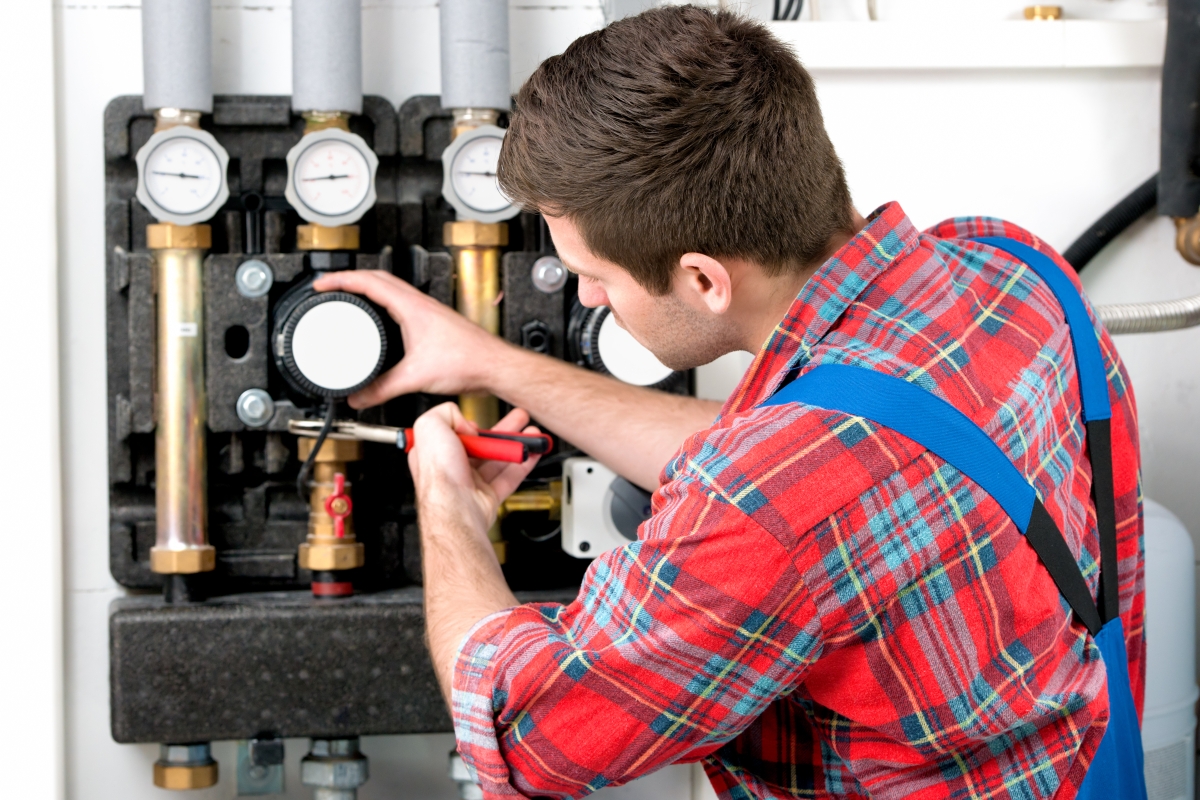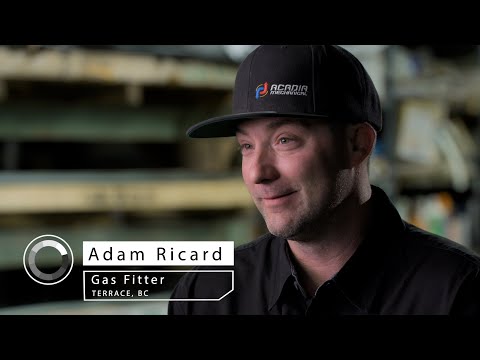Career Overview
Gas fitters install, inspect, repair and maintain gas lines and gas equipment. This includes meters, regulators, heating units, as well as appliances in residential, commercial and industrial buildings.
People in this job should have mechanical skills, enjoy working with their hands and be able to read and understand detailed instructions. Gas fitters must be able to spot and fix problems. Also, they must understand and follow health and safety regulations.
Job Titles
Duties
Gas fitters:
- Read and understand drawings and blue prints
- Measure and mark key points for the connection of gas lines and equipment
- Install, repair and maintain gas meters and regulators, gas lines between gas unit and gas meter
- Install, maintain and service gas heating units and their components, such as burners, valves and automatic controls
- Repair and service gas appliances and related equipment
- Test and replace defective equipment or parts of the systems
- Test and adjust control mechanisms and check pipes and connections for gas leaks using gas detecting devices
- Attend to gas escape calls and help with the investigation of gas fires and explosions
- Prepare work reports
- Advise clients about safety features and how to maintain gas units and systems
- Convert motor vehicles or appliances to use natural gas fuels
Earnings
Earnings is income that workers receive in exchange for their labour. Depending on the type of employment, earnings can be in the form of wages (hourly), salaries (fixed monthly or annual) or self-employed earnings.
Work Environment
# Workers Employed
990% Employed Full Time
65%People in this job work for gas/utility companies and gas servicing companies.
Gas fitters typically work 40 hours per week, but occasional overtime may be required. Some gas fitters may work on-call and respond to emergencies. Gas fitters generally work independently.
Gas fitters may work outdoors and be exposed to a range of weather conditions. Work environments may be noisy and dirty. People in this job must be physically fit and be able to work in tight spaces. They may need to stand for long periods of time and work at heights on ladders and scaffolding. Gas fitters work with explosive gas and must follow strict safety regulations. People in this career receive safety training and wear special safety equipment to protect them from injury.
Career Pathways
With experience and additional education and training, gas fitters can move into supervisory positions, including foreperson, maintenance manager or service manager. Some may decide to become self-employed and start their own contracting businesses.
Related Careers
Occupational Interests
It’s important to understand what kinds of occupations align with your interests.
For more about occupational interests visit Skills for the Future Workforce > Characteristics.
Here are the top occupational interest(s) for this career profile:
Education, Training and Skills
Grade 10 or equivalent (including English 10, Math 10 and Science 10) is required to work as a gas fitter in B.C. Completion of secondary school is preferred.
Gas fitters must be certified to work in B.C.
To become certified, workers must complete a two-year apprenticeship program. The B.C. government is introducing skilled trades certification beginning with a total of 10 trades, including Gas fitters A and B. Certification will be implemented in phases between 2022 and 2024. Learn more about skilled trades certification.
In B.C., all gas fitters must hold a Class A or Class B gas fitter licence issued by the Technical Safety BC (formerly British Columbia Safety Authority). Technical Safety BC is responsible for the certification and SkilledTradesBC is responsible for administering the apprenticeship training.
Apprenticeship programs
Work experience and in-class instruction are part of apprenticeship programs. Some part-time and online programs may be available. To apprentice, workers must be sponsored by an employer. A person who successfully completes an apprenticeship program and the final certification exam earns a Certificate of Qualification. Workers with significant experience in the trade may be able to challenge the certification exam to earn the Certificate of Qualification without completing a formal apprenticeship.
For more information on earning a Certificate of Qualification, visit Technical Safety BC. For more information on the apprenticeship program, visit SkilledTradesBC (Gas fitter Class A and Gas fitter Class B).
To work in other provinces
Gasfitters may need Red Seal certification (Gas fitter Class A and Glass fitter Class B) to work in other provinces. This can be earned by passing an exam and proving significant work experience.
Workers coming to B.C.
Gasfitters who are certified by a regulator elsewhere in Canada can apply for the same certification from the regulator in B.C. Under the terms of the Canadian Free Trade Agreement (CFTA), most applicants who are transferring their credentials from elsewhere in Canada will not be required to complete additional training or testing. However, the B.C. regulator may ask applicants to provide further information, such as a letter of good standing, references or a criminal record check.
Workers who trained outside of Canada
Gas fitters who trained outside of Canada and have never received certification from a Canadian jurisdiction will likely need a full assessment. Most occupational regulators have a process for assessment and recognize internationally trained applicants.
For information about labour mobility in Canada, visit www.workersmobility.ca.
View a list of Professional Regulatory Authorities in B.C.
Education programs in B.C.
The following program areas are related to this occupation:
- Plumbing/Pipefitting

Skills
Every job calls for a certain set of skills. Knowing those skills is the first step in finding a good career fit.
Here, you will find the 10 most relevant workplace skills. Some are more important to achieving success in a certain career than others. These skills may come naturally to you or you may need to gain them through education, training and experience.
See the list of work-related skills below, ranked in order of importance for this career. Check out the list and see if this career matches your skills—take that first step!
Using logic and reasoning to identify the strengths and weaknesses of alternative solutions, conclusions or approaches to problems.
Installing equipment, machines, wiring, or programs to meet specifications.
Determining causes of operating errors and deciding what to do about it.
Keeping track of and assessing your performance, other individuals, or organizations to make improvements or take corrective action.
Considering the relative costs and benefits of potential actions to choose the most appropriate one.
Repairing machines or systems using the needed tools.
Watching gauges, dials or other indicators to make sure that a machine is working properly.
Talking to others to share information effectively.
Understanding written sentences and paragraphs in work-related documents.
Conducting tests and inspections of products, services or processes to evaluate quality or performance.
Labour Market Statistics
Discover data, facts and information that have been gathered and analyzed. Learn about the characteristics of the economy and labour market in B.C.
Employment
Find out about employment types and trends by region and industry.
Employment
990Employment by Region







| Region | Employment | % Employment of this Occupation |
|---|---|---|
| Cariboo | 25 | 2.5% |
| Kootenay | 55 | 5.5% |
| Mainland/Southwest | 540 | 54.3% |
| North Coast and Nechako | 25 | 2.5% |
| Northeast | 35 | 3.5% |
| Thompson-Okanagan | 110 | 11.1% |
| Vancouver Island/Coast | 205 | 20.6% |
Labour Market Outlook
The B.C. Labour Market Outlook is a 10-year forecast of the expected supply and demand for labour in the province. It’s usually updated every year. The purpose is to provide British Columbians with the knowledge to make informed decisions on careers, skills training, education and hiring.
Forecasted Job Openings (2024-2034)
380Forecasted Job Openings
Forecasted Employment Growth Rate
Composition of Job Openings
Job Openings by Region (2024-2034)







| Region | Job Openings | Avg. Annual Employment Growth |
|---|---|---|
| Cariboo | 10 | 1.5% |
| Kootenay | 20 | 0.3% |
| Mainland/Southwest | 220 | 1.8% |
| North Coast and Nechako | Not available | Not available |
| Northeast | 10 | 0.9% |
| Thompson-Okanagan | 60 | 1.2% |
| Vancouver Island/Coast | 50 | 0.1% |
Industry Highlights
Learn about the opportunities in B.C.'s major industries, including employment trends, earning potential, locations of work and more.
Forecasted Job Openings by Industry
| Industry | Job Openings (2024-2034) |
|---|---|
| Construction | 260 |
| Utilities | 80 |
| Retail Trade | 30 |
| Mining and Oil and Gas Extraction | 10 |
Insights from Industry
The demand for gas fitters in B.C. is driven largely by the construction and utility industries to complete residential, commercial, institutional and industrial projects.
Newly built and renovated buildings as well as the development of new utility pipelines creates opportunities for gas fitters because they are needed to install gas systems.
Education in math and science is important in this industry. This knowledge provides a foundation for detailed calculations that are required in planning and doing the tasks required.
Ongoing training and education are important for people in this career. Gas fitters must keep their skills up to date by learning new technology and industry methods.
Resources
-
BuildForce Canadawww.buildforce.ca/en
-
Mechanical Contractors Association of British Columbia (MCABC)www.mcabc.org
-
Red Seal Programwww.red-seal.ca/eng/welcome.shtml
-
SkilledTradesBCskilledtradesbc.ca/
-
Technical Safety BCwww.technicalsafetybc.ca
-
Trades Training BCwww.tradestrainingbc.ca
-
United Association (UA) Canadawww.uacanada.ca
-
WorkBC Trades Trainingwww.workbc.ca/trades








